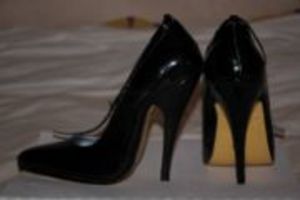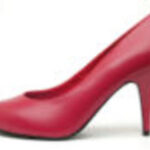Health experts wince at the idea of women wearing 4″+ heels on a daily basis, and encourage most of us to steer clear of those extra-tall heights whenever possible. High heels have been a part of fashion for decades, and continue to reach epic proportions with the season’s trends and styles. Few women can give up their love for high heels, but podiatrists and chiropractors continue to point out the dangers of stilettos and even wedge heels. Is there a way to keep legs healthy when wearing high heels?
Understanding the Dangers of High Heels
High heels encourage the wearer to center their bodyweight on the ball of the foot so they’re practically tiptoeing while walking. The higher the heel, the more stress on the ball of the foot; most people compensate with this awkward stature by bending the hips and spine forward. This creates pressure on the lower back, calves, and hips. Over time, this pressure can become intense enough to cause cramping, pain, and make it very difficult to maintain a healthy posture.
Even a slight elevation or incline can cause emotional and physiological imbalances. Chiropractors have shown a significant link between pressure on the foot and changes in the nervous system. Trigger points and pressure on different parts of the foot can send nerve impulses that lead to headaches, migraines, nervous tension, and even anxiety. Women wearing high heels for extended periods of time-no matter how comfortable they may feel-but themselves at risk for increased stress levels and extra tension in their backs, knees, and shoulders as a result.
How to Keep Legs Healthy When Wearing High Heels
While there are many dangers associated with high heels, there are some simple ways to promote healthy feet and legs with a few strategies. Here are a few tips:
1. Stretch the calf muscles regularly. This promotes circulation and helps the legs stay flexible. Calf stretches each morning and night can easily become a part of an exercise routine, and can build strength and resilience over time.
2. Buy insoles that support the entire foot. These makes provide an extra layer of cushioning between the shoes and feet, and can ensure that the shoe truly fits.
3. Only wear heels in the late afternoon or evening. Most people’s feet swell up during the day, and this adds extra pressure and stress.
4. Take small steps. Shorter steps can help maintain balance and minimize the risk of damage to the feet—save the runway strut for special occasions.
5. Enjoy a foot massage every 3 hours. Just slip off the shoes and use some basic feet reflexology techniques for some quick stress relief.
6. Eat light. A simple change in diet can prevent poor circulation in the legs and feet; eating water-based foods, drinking lots of water, and eating lighter meals can provide the extra energy needed to support the ‘exercise’ of wearing heels.
Wearing high heels is risky business, but there are some ways to curtail its damaging effects. Women who wear high heels on a daily basis need to take extra steps to keep legs healthy and strong.



